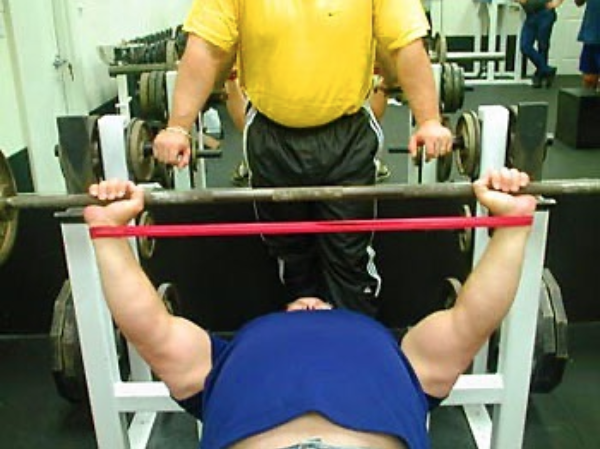
Get your head right. This is true with all sticking points regardless of the point at which you stall out. If you believe you always miss at the top, then you’ll always miss at the top! Your mind has a lot to do with your sticking points. I try to teach all the athletes I work with to visualize their sticking point at a higher position and focus very hard on driving the bar through it. In other words, when you bench you must focus on pushing the bar very fast through your sticking point. Focus will make a big difference.
Learn to use your triceps. This is done by keeping your body tight and focusing on pulling the bar apart. This will involve your triceps more throughout the movement and keep the bar moving in a straight line. A good trick to teach you to do this is to use a mini band or Powerloops from elitefts. You double the band up and wrap it around you wrists while you bench. This forces you to pull the bar apart and grasp the barbell tight. If not, your hands will be shot together.
Move the bar fast. You need to make sure you’re pressing as fast as possible to bust through your sticking point. A slow press won’t build enough momentum to bust past your sticking point. If you’re trying to open a stuck door would you try to open it slowly or would you bust into it as hard as possible?
Strengthen the top half. There are several movements that can help you strengthen the muscles that lockout the bench. These are best done using the max effort method. This is the method where you work up to a one or three-rep max on the movement. The best movement for a weak lockout is a three or four board press. Lower the bar to the boards, pause and press back up.
A second movement that works very well is the floor press with the use of chains. The floor press is performed the same as the bench press except you’re lying on the floor - taking the leg drive away. Work up to about 60% of your best bench, then begin adding one set of chains on the bar with each additional set. You fail when you can no longer add any more chains. The chains increase the weight at the top of the lift while deloading it in the bottom.








